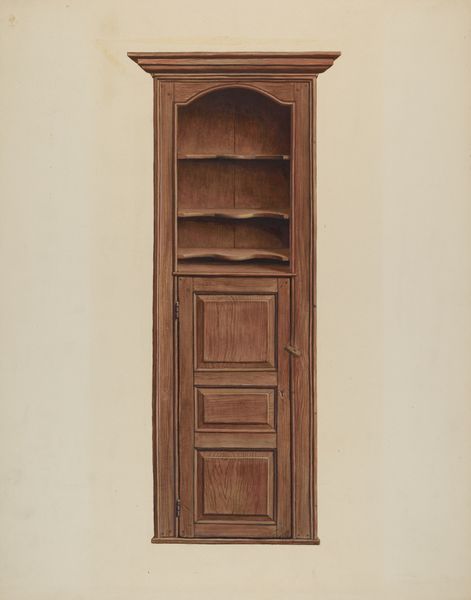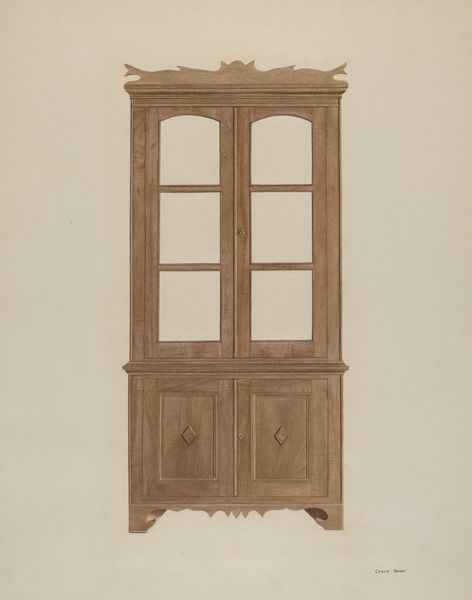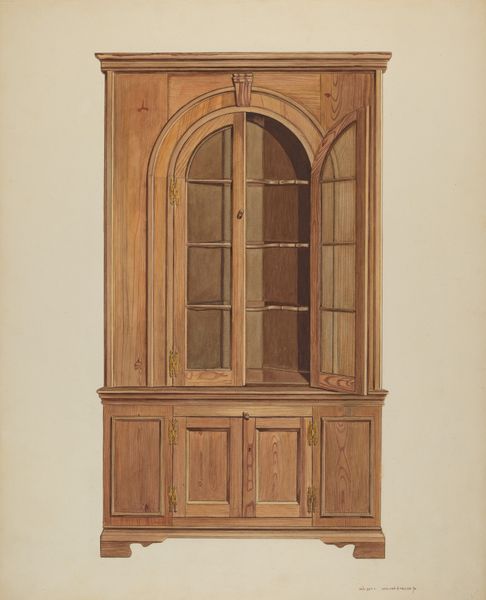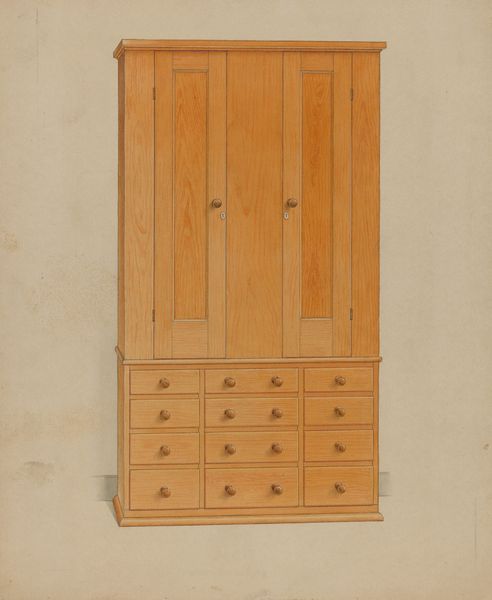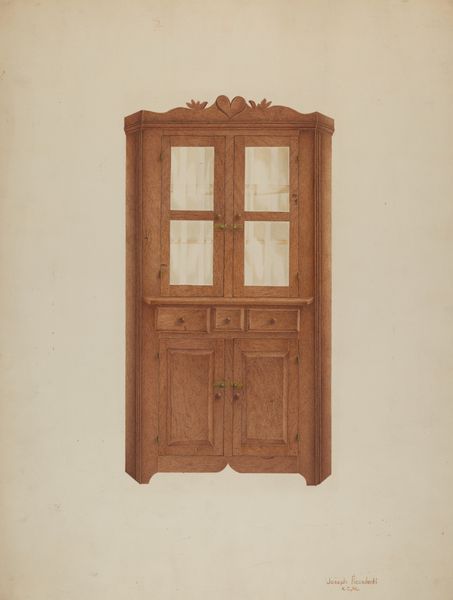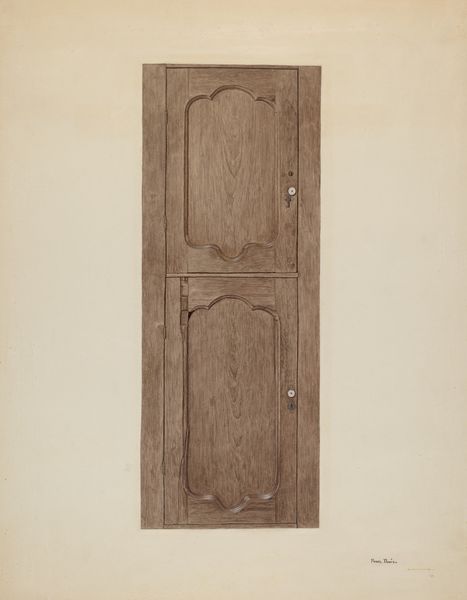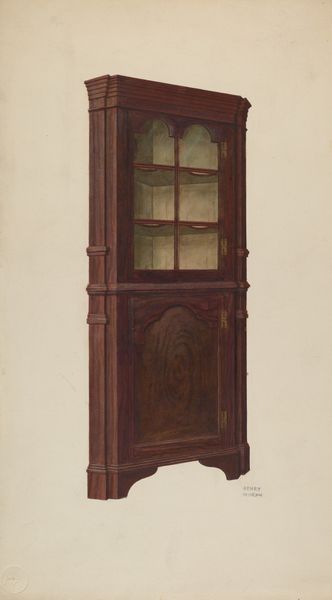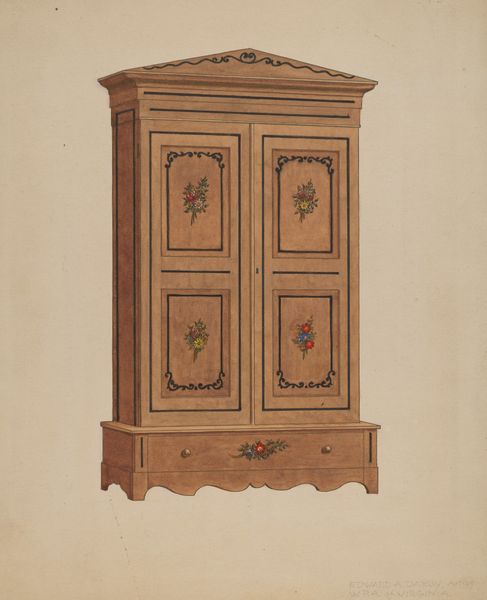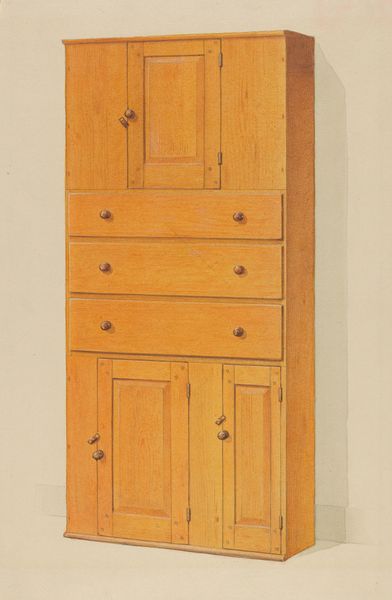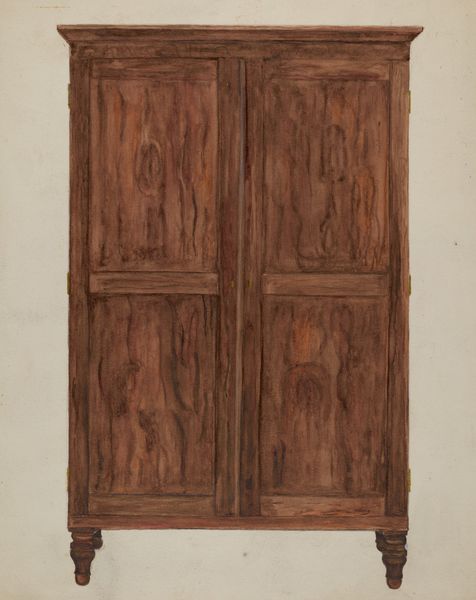
drawing, paper
#
drawing
#
paper
#
decorative-art
#
watercolor
Dimensions: overall: 36.7 x 26.2 cm (14 7/16 x 10 5/16 in.) Original IAD Object: 78 1/2"high; 45 1/8"wide
Copyright: National Gallery of Art: CC0 1.0
Editor: Here we have George Fairbanks' "Corner Cupboard," dating from around 1937, a drawing rendered on paper. The object depicted feels so familiar, and evokes a sense of warmth and domesticity. What symbolic meaning or visual history might be embedded in such an everyday object? Curator: The corner cupboard speaks volumes about our relationship with the domestic sphere. Placed in the corner, it transforms and softens the sharpest angles of a room. Its presence represents not just storage, but containment of cherished objects and memories. Notice how the glass doors of the upper cabinet subtly invite the viewer to wonder and imagine, like a curated personal museum. Editor: That makes me think of a reliquary, something sacred displayed for reverence. Curator: Exactly. The objects displayed inside are stand-ins for stories. Consider the act of placing and arranging. What psychological value does that hold? It's like a personal narrative is physically crafted. The wood itself speaks of rootedness and tradition; how it is depicted creates another layer of information. Fairbanks’ treatment hints at age and veneration. Editor: I see what you mean. It's less about function and more about this sort of cultural storytelling. The cupboard becomes almost like a family crest, representing their history, identity and legacy. Curator: Precisely. Each family will bring with it, its own symbols and stories, represented and performed again and again. That object quietly broadcasts a narrative of family and home to everyone who sees it. Editor: This really changes how I think about everyday objects. Thanks for opening my eyes! Curator: My pleasure! Seeing the emotional depth embedded in our environment, enriching both perception and appreciation for design.
Comments
No comments
Be the first to comment and join the conversation on the ultimate creative platform.
